I began test driving new cars some 30 years ago, so I have driven thousands of them over the years. Many of them are now antiques – which implies I’m becoming one also. But that aside, test driving all these new vehicles has given me a fairly unique perspective as to the changes that have occurred over all of these years.
And truth is, not much has changed – relative to the changes that came before.
Before I began test driving new cars, when I was still too young to be driving them at all (legally, at any rate) there will still cars, first of all. 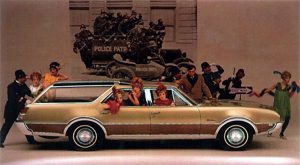
Sedans, coupes and station wagons. There was no such thing as a “crossover” – or an “SUV.” There were a few (as in fewer than about six makes/models) of 4x4s. These were models such as the International Scout, Ford Bronco, Toyota Land Cruiser and Chevy Blazer. The handful of people who bought them needed or just wanted off-road capability and accepted all the compromises that came along for the ride.
These 4x4s were not comfortable or pleasant to drive anywhere except off-road. They were geared for low-speed slogging and in those days, there weren’t overdrive transmissions to compensate for that. At 60, it felt (and sounded) like you were doing 100. Most of the interior surfaces of these 4x4s was made of the same material as the outside in that both were made of metal. There may have been some rudimentary carpet and a dashpad but the rest was just exposed (albeit painted) metal. Most had manual transmissions, roll-up windows and you put it into 4WD by getting out and locking the front hubs, by hand.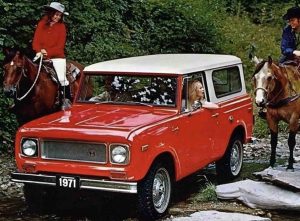
And that’s why most people drove cars.
Almost all of them were rear-wheel-drive, too. Even most of the economy cars, such as the VW Beetle and early Datsuns and Subarus. Fuel injection was almost unheard of. The vast majority of cars had carburetors – and did not have computer controls of any kind.
By the time I began test driving cars in the ’90s, every car had a fuel-injected, computer controlled engine – paired with an overdrive-geared transmission, whether manual or automatic. There were SUVs – a new type of 4×4 that could go off-road but that was as easy and comfortable to drive on-road as a car. Lighter-duty crossover variants of these – more like cars and equipped with all-wheel-drive – began to appear.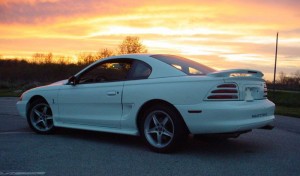
Trucks were becoming more popular than cars.
But since the ’90s, the changes have been morphological and to a great extent superficial in terms of any improvements that could be characterized as comparable to the huge strides made prior to the time I began test driving vehicles in the ’90s.
The first vehicles I test drove are now antiques – yet they are functionally modern. For example, the ’95 Mustang Cobra R press car (that’s what the new cars loaned to journalists who write about them are called) I used to make a Banzai! run up to New York City from the Washington, DC area where I then lived is now almost 30 years old yet one could drive it or any other car made in 1995 today just as easily as any car made today. Its fuel injected engine would start just as immediately. It would not balk or overheat or feel like it was shaking itself apart at 70 MPH (or 130 MPH, for that matter).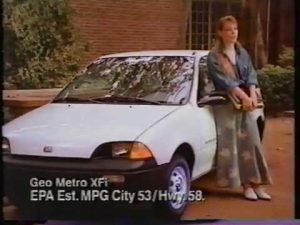
The gas mileage delivered by cars of the ’90s was often better than the gas mileage achieved by new cars. By new vehicles. And the gasses “emitted” by cars made in the ’90s were almost nil, in terms of harmful gasses – which is to say, those that objectively worsened air quality. Those had been all-but-eliminated by then, though the public has been led to believe otherwise. They are told that the latest round of emissions control standards will reduce emissions “by 25 percent” (as an example). What they are not told is that it will be 25 percent of a fraction of a percent. In other words, a meaningless (in terms of air pollution) reduction.
But it is very meaningful in terms of the cost.
This includes long-term durability as well as repairability. The vehicles made back in the ’90s and through the early 2000s were 20-year vehicles and even more than that, if treated well. Most required very little regular maintenance and – usually – nothing major had to be repaired until they were at least in their early adolescence. Most could be depended on to remain dependable until they were old enough to buy beer.
I cannot recall a single new vehicle I test drove back in the ’90s that glitched. Probably because while they had computers, everything wasn’t controlled by computers. Over the course of just the past month, I’ve had three new press cars glitch on me. The touchscreen in one of them – which they all have now – went comatose for awhile, which meant no stereo for awhile as the stereo is controlled via the touchscreen. Another slammed on its brakes as I was trying to merge (this is “advanced driver assistance technology,” which all new vehicles come standard with, notwithstanding most people didn’t ask for such “assistance” and would likely choose not to have it, were that option available to them).
They have become much more complex, in other words – but that is not necessarily an improvement. They are certainly much heavier on average, which is not an improvement – if you’d rather a lighter vehicle that used less gas (and produced less, thereby).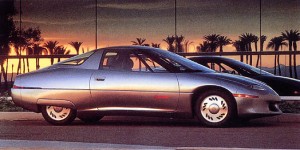
There are electric vehicles, of course. But they aren’t much improved, either, relative to the EVs I test drove back in the ’90s. Except insofar as they are much quicker, which they are to distract people from the fact that they are still functionally restrained by not being able to travel very far – and needing a lot of time to be ready to travel again.
I often wonder how different the vehicles of today might be if the government hadn’t caused vehicle design to homogenize (in order to comply with all the regulations) and to stagnate, in terms of meaningful improvements.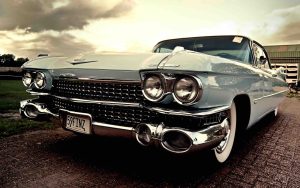
I imagine new economy cars that got twice the gas mileage of the economy cars of the ’90s and that cost less (in real dollars) than they did. I can’t even begin to imagine the different kinds of vehicles that might have been available, if the car companies were still free to try out daring and so different designs, rather than superficially different cosmetics. There would be more rather than fewer brands – and every vehicle (just about) would not be a crossover or an SUV.
These are idle the thoughts and reminisces of one who remembers because he was there – and thought you might like to hear about it.
. . .
If you like what you’ve found here please consider supporting EPautos.
We depend on you to keep the wheels turning!
Our donate button is here.
If you prefer not to use PayPal, our mailing address is:
EPautos
721 Hummingbird Lane SE
Copper Hill, VA 24079
PS: Get an EPautos magnet or sticker or coaster in return for a $20 or more one-time donation or a $10 or more monthly recurring donation. (Please be sure to tell us you want a magnet or sticker or coaster – and also, provide an address, so we know where to mail the thing!)
If you like items like the Safety Cult T shirt pictured below, you can find that and more at the EPautos store!












It’s funny that in Europe you have mostly cars and wagons, cos the gas is expensive and space is scarce
Modern panics are all about very small numbers inflated with intellectual and political tricks.
The latest is complaining/panic is about Antarctica sea ice extent being at a record low. Never mind that it’s more than cold enough to generate sea ice so we’re looking at a product of ocean currents and wind. We’re looking at ~6%. Six percent vs 1986. When it goes higher again the media will just forget about it and so will the control freaks and alarmists.
We are harassed constantly with these imperatives that are very tiny. Meanwhile China doesn’t care about anything and can’t even get to mid 1970s standards never mind mid 1990s or current. But that’s okay because they have the correct political system.
All this government harms the stated aims of environmentalists but advances political goals. Imagine cars like a 1985 Honda Civic or Ford Escort with today’s drive trains and suspensions. They would be quite quick, offer probably 40mpg or more, and handle well. But as we know safffeeeettttteeeee and other control freakism had to be imposed.
‘Imagine cars like a 1985 Honda Civic or Ford Escort with today’s drive trains and suspensions.’ — Brent P
Or, imagine that AT&T had prevailed in the antitrust suit which busted it up in 1984.
Today, you’d be able to lease a primitive flip phone from AT&T for $100 a month, maybe with a weather app and an AP News prolefeed. No videos, no GPS, no third-party apps.
Just as we can’t see all the innovations smothered in the crib by stifling regulation, alternative history allows us to visualize what would have gone wrong if long-ago oppressive regulation had soldiered on — stifling creativity, progress and freedom.
Imagine the flying cars which, in my infancy, Popular Mechanics promised we’d have by 1985. Promises made; promises broken.
Today they give us drones (with severe regulatory restrictions), but never the ability to soar like eagles ourselves. For instance, to hover outside the William Jefferson Clinton ‘campus’ of the EPA, drop our drawers, and flash the apparatchiks within.
On my mind, as I mail my (extended deadline) tax return today: ‘On February 18, 2010, Andrew Joseph Stack III deliberately crashed his single-engine Piper Dakota light aircraft into Building I of the Echelon office complex in Austin, killing himself and IRS manager Vernon Hunter.’
Freedom = death. — F. Joe Biden, usurper
The high point of the automobile seems to me to be between 1998 and about 2005. OBDII, fuel injection and ABS, but cars were not yet foolishly over-complex. Nonetheless, even those years contained crappy things like airbags (which can become deadly), “2-stage” paint with clearcoat, plastic radiators and a lot of cheap plastic interior parts.
I 100 percent agree. The 1998-2005 model year vehicles were built at a point when the excess regulation had not started. What I mean by that is where automakers stopped making vehicles for buyers and drivers and started making them for their first client, the government. There was an effective freeze on auto regulations between 1981 and 1992.
The EPA gas mileage requirement targets were the only thing the government was aiming for. In 1992, when the ink was barely dry on the clean air act of 1990, the government banned the use of Freon in vehicles. Out with R12 and in with 134a. Sometime during the early 1990s, automakers were being nudged to look at strengthening roof crush and side impact requirements. Those regulations were not too bad and it was mostly centered around adding airbags.
Enter the Bush administration and the Energy Conservation Act of 2007 plus strengthened regulations for side impact, roof crush and gas mileage changed would force the largest change and design homogenization in a decade. The energy conservation act forced automakers to get 35.5 mpg by 2020 (then, 2016). It also allowed the executive branch in the form of the EPA to set new mileage targets over and above that, in an unprecedented move. The era of hyperregulation had begun.
For NHTSA, FMVSS 204 and 208 requirements forced automakers to meet stringent side impact, roof crush and pedestrian safety targets to be wrapped up by 2011. The regulations started in 07 and automakers had 4 years to fully comply. The only kinds of vehicles that could meet these requirements would have high beltlines, small window openings, large pillars, all leading to huge blind spots and up to 40 percent reduction in overall glass area for cars of the same size. The blunt noses of new cars killed visibility as well. Carmakers have been complicit with government to manufacture a defective product as a result. As these vehicles entered the vehicle mix in statistically meaningful numbers, the result has been a doubling of pedestrian fatalities since 2009 from 4600 to 8300 per year in 2021. Even if you factor in cell phone use and increases in homeless numbers, the numbers are staggering and documentable. Pedestrian fatalities are the first place where reduced outward visibility would show up in the numbers, however, the data on other crash types is not even studied.
There is no doubt that this is a concerted effort to get us out of the automobile. The question is what will we do about it.
How I learned to stop worrying and love the battery.
The assault is obvious. The arms and legs warehouses are full, time to build more.
Battery powered electric vehicles, given the somewhat propensity to become an auto-immolating manufactured device, digitally processed, can also become a munition.
Program batteries to detonate, auto-immolation, designated to do so at an enemy’s most vulnerable position, red line the acceleration, thermal runaway, a lot of collateral damage can become a reality. Probably possible.
Every EV on the planet is also or can be a weapon of choice.
Don’t need no stinkin’ bombs, just self-driving electric vehicles loaded to the hilt with deadly lithium ion snake oil.
Call it the Cutlass Lithium Edition, to the hilt.
The Theo Van Gogh Special, cutlasses in each lung to the hilt.
A written message on a piece of paper, for clarity.
Clear as mud.
What has been wrought is here now.
Fuck Peace!
And they were all different. At least across manufacturers. A Dodge K-Kar was not the same as a Subaru XT, which was not the same as a Honda, which was not the same as a GM clone-car, and not the same as a Ford Crown Vic.
Trucks and vans were designed a lot more uniformly, as they were built for utility, not to impress the ladies. Unless you found a keeper or a freak…
Stagnation….but better fires…..
EV fires…..
@ 0:12 in video see a burned up Tesla dealership in France……
https://www.youtube.com/watch?v=G-zKTqe19ss
Perhaps the 25% reduction in ’emissions’ (not pollutants) will be due to the 30% fewer cars on the roads and 40% fewer miles driven.
In some ways I still miss my 92′ Chevy Cavalier. It was brand new when I got it, a graduation gift given to me by my grandmother (in this day and age I’d have to have a pretty wealthy relative to be able to gift me a new car!). It was a simple little car, with a 4 cylinder that seemed to not have much more power than a lawn tractor, but it got me from point A to point B without any problems. I do wish it had come with power windows, as my arms were just too short to reach across and close the passenger side window while driving. And surprisingly, in the dawn of the SUV age, that little Cavalier could carry quite a bit of stuff. You could lay the back seats down and you had the entire length of the vehicle (or at least from the front seats back) to carry large, awkward stuff.
It got close to 32mpg highway and I never had any major mechanical problems with it. When I topped 155K miles I was looking into a suspension overhaul, and not long before that I had to have the radiator repaired as it had developed a leak.
But sadly one day I was looking to kill time as I had been laid off of my job, and so I went to see a cheap matinee movie. On the way out some clown in a minivan blew a stop sign, and that was the end of my Cavalier. Turned the front end into an accordion, but luckily I wasn’t hurt. Imagine that – no airbags, just a plain old seatbelt and I was fine. The only saaaftey feature it had was ABS.
And I have no doubt I could have kept it running (as I was living in CA at the time – no road salt and I wasn’t near the coast) for a much longer time.
That said, I had no idea that newer cars (at least until I started reading this blog) were chock full of all sorts of saaaftey feature garbage like a backseat driver on steroids’. How sad. There’s no way in creation I’m going to put up with driving a vehicle that fights me for control. Any car that slams on the breaks when it “sees” a squirrel frolicking on the shoulder of the road when I’ve got someone close behind me (or not) is a hard no.
I just wonder how long it will be before ambulance chasers discover they can get big bucks out of car manufacturers for injuries and deaths caused by these features. Worse yet, with such lawyers, drivers will likely find ways to get around culpability for crashes (the car did it – not me!).
If that ever happens watch those “features” disappear…
I had a 1985 Chevy K5 Blazer, I love that truck. The part time 4 wheel drive was fantastic. You did have to get out to put it in 4 Wheel Drive, you did have to put it into neutral to go into 4 wheel low. I had the Silverado package, their top package at the time, so the interior was nice, carpeting, extra speakers padding, removable top in the back. Black with a saddle Tan interior. Til this day still the most favorite vehicle I have ever owned. I drive a Tahoe now, while the ride is better and the interior is Larger, the K5 was a true Truck as opposed to an “SUV”, beautiful and fantastic to drive.
(EDIT) You DIDN’T have to get out to switch it to 4 wheel drive.
Complexity leads to chaos.
Oh, how I wish I could teleport back to my youth & the irreplicable Vega Station Wagon. It was simple and dumb. Got lots of bad press but even a dumbass like me could keep it running.
Didn’t get great mileage but I never went on big trips with it. Just to/from home to work.
Never had any mechanical or electrical issues with it, either. Because it was simple & dumb.
“ Complexity leads to chaos “
Correcto! Aerospace background, flight controls. Failure risk climbs as the complexity increases. Even adding something as simple as a wiring connector plug degrades reliability. Were the wires prepped correctly for the pins or did a couple strands get nicked? Pins crimped properly, not loose but not too tight? Pins into shell, retention OK or is a pin going to back out when the connector shell is mated on installation in the A/C?
Going against their inherent tendency to over-engineer, the Germans made their vaunted Me262 jet fighter actually rather simple, being that it was the “high tech” of its time, and, in many ways, AHEAD of its time. It’s superlative performance came not simply from the jet engines, which were actually inferior to the contemporary British engines, being that Germany could not get Titanium to make turbine blades, thereby reducing combustion chamber temperature and with it, specific impulse and fuel economy, but also in its swept-wing design. Luftwaffe Major General Adolf Galland, himself an ace several times over, in flying the “Swallow”, said it was like “being carried on wings of angels”, i.e., the aircraft handled extremely well. Getting the engines to at least last long enough (average TBO of 50 hours!) for a reasonable amount of sorties was what delayed the Me262’s introduction, not Hitler’s vacillating about whether to use it as an interceptor or a tactical bomber. It’s fairly short range all but mandated the former role; it simply didn’t have the endurance to be able to “loiter”, a very useful feature for any attack aircraft in support of the “Grunts” on the ground!
Simple n dumb was a phrase I used in a previous life as a software developer. At the unit level the goes-insas, the processing, and goes-outsas were just that, simple and dumb.
Key punch operator says it all.
One key at a time, you get what you see.
Keep it simple, stupid.
Are there really no new cars without driver assist tech? Looking to replace a ’13 Edge but don’t want the tech assistance with pretty much anything. How many years back do I begin my search to avoid the majority of the b.s.?
Hi Jalky,
If there are any new vehicles without “driver assistance technology,” I haven’t driven them! And I get to drive pretty much everything. The good news is if you go back about five years – and stay away from luxury brand vehicles – you can avoid most if not all of these “advanced” technologies.
Thank you. Did just that with the replacement truck two+ years ago. Got a ’17 F150, V8, 12k miles, and only a backup camera for tech. Knobs for controls and even a bench seat if console folded up! Will now look for later teens model with low miles. Prices, however, are absurd.
Oh, to find the vehicle equivalent of a “low-mileage, pit wolfie” (kudos if you get the reference), recondition it as needed, and just drive and maintain the thing until the wheels fall off.
And why not? It’s dirt cheap technology. Motion sensors, rudimentary cameras to detect flow and a computer. Tie it into the drive-by-wire system already in place and boom! An extra $2000 in sticker price and something for the salesman to talk about on the test drive.
Hi RK,
Yup – as opposed to say a cable for the throttle. Which can be replaced by the owner with a $20 replacement…
Just saw a 1926 Bentley…
Mechanical brakes (non hydraulic)….mechanical control of spark advance/retard, SU carburetors, totally analog and mechanical.
The 3.0 L (2,996 cc or 183 cu in) straight-4 engine was designed by ex-Royal Flying Corps engineer Clive Gallop[3] and was technically very advanced for its time. It was one of the first production car engines with 4 valves per cylinder, dry-sump lubrication and an overhead camshaft. The four valve SOHC Hemi design, with a bevel-geared shaft drive for the camshaft, was based on the pre-World War I 1914 Mercedes Daimler M93654 racing engine.
the fully Aluminium enclosed camshaft, which greatly contributed to its durability. But having the valve-head and block in one-piece made for a complicated and labour-intensive casting and machining.
This was a feature shared during that time by the Bugattis which the car was later to compete with. The engine was also among the first with two spark plugs per cylinder, pent-roof combustion chambers, and twin carburettors. It was extremely undersquare, optimized for low-end torque
How many of the current cars on the road will be around in 100 years?
I can turn off most of the driver assist tech in my current generation TNGA Camry, but I know that the real problem with the platform long term will be the repair costs and availability of replacement parts for the tech as the vehicles age.
I’ve experienced intermittent problems with the forward facing camera which enables the “features”, and when the camera glitches, the dash lights up like a Christmas tree, even with the assists deactivated. When the camera totally fails, the replacement is $1200 from Toyota, no third party.
“The gas mileage delivered by cars of the ’90s was often better than the gas mileage achieved by new cars.”
I had an 87 celebrity which got about 30 mpg highway with a 3 speed automatic. Not bad.
Hi Dan,
Yup!
There were many economy cars capable of better than 40 MPG 30 years ago. Today, there are just a few.
I had a ’88 Chevy Sprint with the 3 cyl engine and a 5 speed and I changed teh 12″ wheels to the 13″ wheels from the Suzuki Sprint and had the engine massaged and my mileage went from 34 to 41 mpg and a faster speed. I changed out the factory carb for a 2 barrel Weber. I used it for commuting 38 miles and one of those cars I wish I didn’t sell. I took out that anemic rear seat and fashioned a plywood deck and made it my ‘lil truck with only two buckets.
My dad’s s**tbox 86 Renault Alliance could do high 50’s on the highway sometimes. Solid high 40’s the rest of the time. It was a turd of a car, but it was pretty light and got great mileage, even with his heavy foot. Electric car batteries probably weight more than that whole car did.
Man, you guys, your comments cinch how this is All a Big Gigantic rip-off Con-Job x 10.
Our overlords & their minions…Bastards.
Hi Rich,
I remember the Alliance! And the Fuego… named after the sound your ass makes after a meal at a greasy Mexican place!
My father-in-law had a 90 Celebrity wagon. By today’s standards a “basic” car that didn’t win many points with the pearl clutching biddies at the consumer magazine.
But, it was a very reasonable car. Six cylinder decent gas mileage, comfortable seats, and sized right with decent visibility for an oldster’s driving needs.
He drove it for 15 years with just normal maintenance, till he got hit and the car was totaled. He was bumped a bit but OK.
Getting the Mopar “B-body” urge, particular for the mid to late 1970s, of the 2-door Chrysler Cordoba, Dodge Charger SE, or Plymouth Fury models, with a 360 or 400 four-barrel, I’ve had the idea to swap out the otherwise decent A727 automatic (keep it, though) for an A518 out of a Dodge pickup from the late 1980s to about 2000, when Ma Mopar did away with the “Magnum” engines and also revised the bellhousing. That’s the same Torqueflite, but with a 4-speed ‘overdrive’ top gearing, and it should handle the vintage B-body just fine. At worst, with slight difference in the tail housing, I’d have to get a spare driveshaft and have a shop cut and weld it to the proper length. The other trick, of course, is to put the proper gear range on the column shift!
I remember those. They were do dog slow, but they were great on gas. Weighted less than 2800 lbs. Iron duke 4 cyl and tall gearing. I liked their packaging efficiency
Stagnation is the normal product of government bureaucratic regulation. The car maker’s R&D departments trying to predict what a gang of psychopaths is going to force on them next, instead of innovating or improving. They were pretty good at predicting when the regulation was just getting started back in the early 70s, but the regulation has exploded ever since, and now there’s no point in trying to predict, as it will just change again, and soon.
The free market was created by God, there is no flaw in it. It always produces the best product at the lowest price, while paying out the highest wages. Too bad it’s been killed.
Excellent. A thousand upclicks.
Cars with screens which constantly compel the driver to stare at them for every routine operation, rather than keep ones eyes on the road. Just brilliant. Are they trying to get people killed with these inane ‘innovations’?
Radios which can’t receive anything other than the local station, those absurd wheel shaker ‘safety, safety, safety cult’ devices which shake the whole car when one changes lanes.
The bleeping, blooping, noisome ‘warning’ signals of approaching cars which invariably tell us it’s too late to take evasive action.
These devices are designed not to protect but to endanger, inconvenience, and discourage drivers from driving, as well as dumbing down the populace.
The dead hand of the BigGov Safety State in action.
Indeed, Paul –
Driving any new car is like driving with an annoying nag riding shotgun, second guessing everything you do and attempting to “correct” you at every turn.
It’s why I keep my old Trans Am. Well, it’s one of the reasons why I keep it. It keeps me sane – and reminds me of what was, once.
One feature I absolutely cringe at with my 2020 Ford (con)Fusion is the “reminder” to take a coffee break when on a trip. I’ll decide when I need a break, thank you very much, my momma, “Gawd” rest her soul, has been gone these 28 and change years past, and long before she passed on, I didn’t need her to wipe my hiney.
Another reason to not ever take it back to the “Stealership”. If they put any more firmware “upgrades”, like the one that took away my ability to permanently disable the engine auto-shut off (I have to do it every time I start the engine), then they might install an “upgrade” that the car will, if according to some “algorithm”, decides for ITSELF that I’m too tired, will simply refuse to go any further, at least until it “decides” I no longer “need” a “time out”.
Good grief thought my 2018 Jeep was annoying, that reminder BS is beyond the pale.
That they ruined you ability to disable auto shut off would fry me as well. The Grand Cherokee can be fitted with an aftermarket plug in module that will disable A.S.S. on every start, they’re available for your Fusion as well.
Amen that, Douglas!
I suppose I’m just prickly about being parented as an adult. I suffer from what they style Opposition Defiant Disorder (something like that). By which they mean a person who resents being told what to do by people who have no business telling anyone what to do.
I love my ’02 truck because it does what I tell it to do.
The Ford Model T cars had few changes over its 20-year production run (1908 to 1927), simply, because, for SO MANY buyers, it was their FIRST car, EVER. Sort of like the auto equivalent of the Commodore 64 8-bit computer. Ford made few changes, and certainly not for “styling”, simply because most Americans were pragmatic WHITE MALES, and as the price DROPPED by nearly 70 percent from when initially introduced, the WAGES of the average Ford assembly line worker at “The Rouge” nearly TRIPLED, without benefit of a labor union. Most changes made to the “T” were to either reduce production costs, or to solve identified reliability problems, which were actually quite few for a mass-produced vehicle.
At some point, with America become more affluent during the “Roaring Twenties”, Ford had no choice but to discontinue the “Tin Lizzy” and move on to the Models A, B, and later the Tudor coupe, with that innovative, for its time, flathead V8.
The main point is that the FREE MARKET dictated the rise, reign, and ultimate demise of the famous Ford Model T. No “Gubmint FATWAs” involved, whatsoever.
But but but but what about all those people who held off buying a tin Lizzy because they bet the price would continue to drop? Sure, Ford sold millions of cars, but imagine how many more he would have sold (and sooner) if the FED had been goosing the “consumer” to buy?
Where would we be without Keynesian economists bringing all those future purchases forward by devaluing the currency and creating debt? Why, its almost like you don’t want a boom and bust cycle!
John. Regulations were advancing quickly in the 1970s an then slowed significantly in the 1980s. Despite that, the highway death rate dropped, horsepower rose and gas mileage increased. They had trouble meeting mileage targets in the late 80’s but Reagan relaxed them for 1987-88 to 26 mpg.
Jerry Ralph Curry, Bushs NHTSA secretary started ramping up the initial safety requirements for side impact standards. Under Clinton, rollover standards were adopted as Explorers were allegedly rolling over all over the place. I place the blame directly on Ford, as they didn’t know how to select a proper inflation pressure. 26 psi in a 4000-4500 lb SUV. Stupid.
I have been pondering what types of cars we would have absent the regulation in the last 50 years. I wish I could have known.
Brute force regulation did not take place until Bush 2 came in and modified FMVSS 204 and 208 for the 2007 to 2011 model years. Automakers were given 1 model cycle in the 4 years to comply. This added about 400 lb to every car. It dropped the gas mileage. Reduced the visible area outside the car. These cars are causing accident rates to rise. Forget about the stupid phones.
Obama added additional gas mileage requirements.